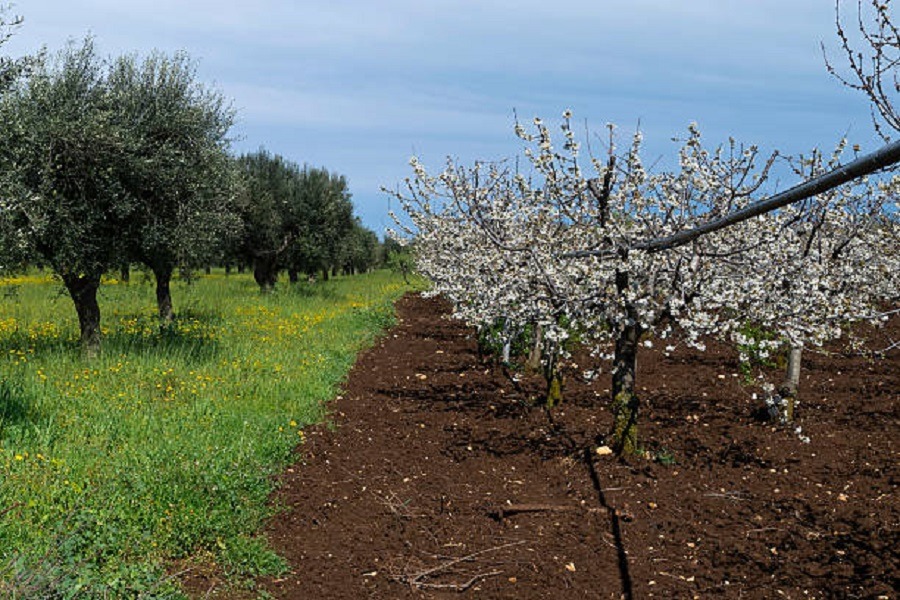Planting Zones Guide

Planting Zones Guide
When it comes to gardening, one of the most important things to know is the hardiness zone for your area. Understanding your planting zone can be the difference between a thriving garden and one that struggles.
Missouri spans across zones 4b to 7a. This means that depending on where you live in the state, the coldest temperatures could range from -20 degrees Fahrenheit in zone 4b to 0 degrees Fahrenheit in 7a.
Understanding Plant Hardiness Zones
- Zones 4b (-25°F to -20° F): This zone covers some northern parts of Missouri. Plants suitable for this zone should be able to endure extremely cold winter temperatures.
- Zone 5a (-20°F to -15° F): This covers a small part of Northeast Missouri. Plants here will need moderate cold-hardiness.
- Zone 5b (-15° F to -10°F): Covers parts of Northern Missouri and Central Missouri with cities like Kansas City and Columbia included.
- Zone 6a (-10°F to -5°F): This is found across a wide swath of central Missouri.
- Zone 6b (-5°F to 0°F): Covers some areas around St. Louis and southern parts of the state.
- Zone 7a (0 °F to +5 °F): The warmest region, covering only some southernmost points in Missouri.
These specifications are critical when selecting plants for your garden. For instance, if you live in Kansas City (zone5b), you need plants that can tolerate winter temperatures as low as -15°F.
Selecting the Right Plants
Plants and seeds sold in nurseries often have labels indicating the USDA hardiness zones they’re suitable for. When selecting plants, ensure they are appropriate for your zone or a lower one. Plants designed for a warmer zone may not survive Missouri’s winters.
For example, if you’re interested in growing bamboo for its eco-friendly properties such as making bamboo straws, ensure you choose a variety that can thrive in your specific zone. A species like Yellow Groove Bamboo (Phyllostachys aureosulcata), which is hardy from zones 4 to 9, would be an excellent choice across all of Missouri.
Adapting to Your Zone
While your planting zone provides a useful guideline, it’s not definitive. Local conditions such as soil type, exposure to wind and sun, and the presence of buildings can create microclimates within your garden. Understanding these conditions can help you push the boundaries of what you can grow.
In summary, understanding your planting zone is vital for gardening success in Missouri. Finding this out is just the first step; adapting to local conditions and selecting plants that can thrive in these conditions will ensure a healthy garden.
Understanding Planting Zones in Missouri
Before you start planting in Missouri, you should understand what planting zones are and how they impact your gardening. This guide will walk you through the essential information about planting zones exclusive to Missouri and how to maximize them for your gardening activities.
USDA Planting Zones in Missouri
Missouri has a diverse range of climates, meaning it falls into multiple USDA hardiness zones. The state is divided into five hardiness zones: 5b, 6a, 6b, 7a, and 7b.
- Zone 5b (-15 to -10 F): This zone covers the northern parts of the state including Mercer County.
- Zone 6a (-10 to -5 F): Most parts of north-central and northeast Missouri fall under this category including Sullivan County.
- Zone 6b (-5 to 0 F): It covers large parts of central Missouri.
- Zone 7a (0 to 5 F): Southwest and some areas around central Missouri like Benton County come under this zone.
- Zone 7b (5 to 10 F): Only small portions of southeast Missouri near the Mississippi river falls under this category.
You can use this information when choosing plants for your garden or farm. For example, bamboo straws are more suitable for higher numbered zones as they prefer warmer environments.
Why Understanding Planting Zones Matter?
Understanding your planting zone will enable you to determine which plants will thrive best in your area. Each plant or crop has a specific zone where it grows best. For instance, if you live in Zone 5b, you might want to avoid plants suited for warmer climates like Zone 7b.
- Determining Plant Health: Identifying the correct zone will help you choose plants that stand the best chance of survival and prosperity.
- Planning your Garden: Once you know the plant hardiness zones, you can plan ahead and select suitable plants for each season.
- Maximizing Harvest: If you’re farming or maintaining a vegetable garden, understanding your zone can help optimize your yield by ensuring that you’re planting crops at the right time.
Using Missouri Planting Zones to Your Advantage
Now that you understand what each USDA hardiness zone means in Missouri and why they’re important, it’s time to put this knowledge into action.
Research about the plant species or crops you’re interested in cultivating. Note their ideal hardiness zones. Match these with your own zone and proceed accordingly with planting at appropriate times.
Remember, knowing your hardiness zone is just one step towards successful gardening or farming.
Happy gardening!
Planting Zones Guide
Understanding planting zones, commonly referred to as hardiness zones, is critical to successful gardening in any state, including Missouri. The U. S. Each zone is 10°F warmer (or colder) in an average winter than the adjacent zone.
Planting Zones in Missouri
Missouri’s diverse geography results in a wide range of planting zones which vary from 5b in the north to 7a in the south.
- 1 to -23.
- Zone 6a: Minimum temperatures of -10 to -5 degrees Fahrenheit (-23. 3 to -20.
- Zone 6b: Minimum temperatures of -5 to 0 degrees Fahrenheit (-20. 6 to -17.
- Zone 7a: Minimum temperatures of 0 to 5 degrees Fahrenheit (-17.
Knowing your garden’s hardiness zone will help you make informed decisions about what plants are most likely to thrive there.
Importance of Planting Zones
- They provide a guide for choosing the right plants for your location.
- They assist gardeners in planning their planting and harvesting schedules.
- They help avoid investment into plants that won’t survive the local climate.
Selecting Plants for Your Zone
For example, if you’re interested in sustainable products, consider bamboo straws among other bamboo varieties suitable for Missouri planting zones, especially zones 6b and above where it can typically survive winters outdoors.
- Zone 5b: Juniper, Daylily, Hosta
- Zone 6a: Yucca, Butterfly bush, Bamboo
- Zone 6b: Crape Myrtle, Magnolia, Bamboo
- Zone 7a: Sweetbay Magnolia, Southern Magnolia
Checking Your Planting Zone
If you’re not sure what planting zone you’re in, you can consult the USDA’s Plant Hardiness Zone Map. Enter your ZIP code and get information about your planting zone.
Adapting to Your Planting Zone
In such cases, consider using techniques such as utilizing microclimates on your property or growing in containers which can be moved indoors during harsh winter weather.
Planting Zones Guide
These zones, designated by the USDA, give gardeners an idea of the minimum temperatures a plant can withstand.
What are Planting Zones?
Planting zones, also known as hardiness zones, are geographical areas defined by climatic conditions. They specifically denote the lowest temperatures that plants can survive during winter. It’s important to know which zone you’re in before planting to ensure your chosen plants will thrive.
Each zone is a difference of 10 degrees Fahrenheit from the previous or next one.
Missouri’s Planting Zones
- Zone 5: This is the coldest area in Missouri, with minimum winter temperatures between -20 and -10 degrees Fahrenheit.
- Zone 6: This area has slightly warmer winters with minimum temperatures between -10 and 0 degrees Fahrenheit.
The variations in temperature within these zones often dictate what kind of plants can be cultivated successfully.
Selecting Plants for Your Zone
Before buying plants for your garden, it’s essential to know their hardiness zone information. This information can usually be found on plant tags or seed packets.
For instance, bamboo straws, a popular eco-friendly alternative to single-use plastic straws, come from bamboo plants that flourish in warmer climates like Zone 7. They might not thrive as well in colder areas like Zone 5 without additional care and protection against freezing temperatures.
Understanding Microclimates
In addition to the general hardiness zones, there can also be microclimates within your property. These microclimates could allow you to grow plants not typically hardy in your zone, or they might require you to offer some plants extra protection.
Whether it’s cultivating bamboo for sustainable straw production or growing a colorful variety of perennials, knowing your zone is key to gardening success.
Planting Zones Guide
Missouri has a diverse climate, which makes it an ideal place for various types of plants to grow. The state’s agricultural zones range from zone 5 to zone 7, making it possible for both cold-hardy plants and warm-season crops to thrive.
Understanding USDA Plant Hardiness Zones
In Missouri, the northern parts fall under zone 5 with temperatures as low as -20°F. The central region is zone 6 that can reach -10°F while the southern region falls under zone 7 with winter temperatures rarely falling below 0°F.
Importance of Knowing Your Planting Zone
- Best time for planting different types of plants.
- How to prepare your garden for seasonal changes.
It also allows you to make informed decisions when buying plants or seeds as many catalogs and nurseries list suggested hardiness zones for their products.
Choosing Plants Appropriate For Your Zone
When selecting plants, keep in mind not all plants are suitable for all zones.
- Zone 5: Hardy vegetables like kale, spinach, and Brussels sprouts do well in these colder regions. Also ornamental trees like the Austrian Pine and shrubs like the Arrowwood Viburnum can withstand the harsh winters.
- Zone 6: This zone supports a wide variety of vegetables including tomatoes, peppers, cucumbers, and squash. In terms of greenery, Dogwood trees and Boxwood shrubs tend to do well.
- Zone 7: Warmer climate allows for growing heat-loving plants like bamboo (great for bamboo straws), okra, and sweet potatoes. The Southern Magnolia tree and Crepe Myrtle shrubs flourish in this zone.
Adapting to Your Planting Zone
Gardening in Missouri requires adaptability. It is helpful to create a planting schedule which factors in the last and first frost dates of your specific zone. It is also essential to prepare your garden bed based on the specific needs of the plants adapted to your zone.
Local Resources for Missouri Gardeners
Local resources such as the Missouri Botanical Garden, University of Missouri Extension, and local nurseries can provide further guidance on plant selection, planting times, and care instructions specific to Missouri’s planting zones.
By understanding your specific planting zone, you can maximize your gardening success and enjoy a vibrant garden year-round. Whether you’re growing vegetables for your table or cultivating bamboo for eco-friendly straws, a knowledge of Missouri’s varied planting zones will help guide your green thumb.
Tags:
